No-Fry Refried Beans w/ Garden Peppers
There is absolutely no comparison between homemade refried beans and the stuff that you get in the cans! This would be unfortunate. However, it's really not that difficult to make beans. It just takes a little bit more planning than popping open a can!
The beans will need to soak overnight, so you'll have to remember to start the day before. But that's really the most difficult part of cooking beans. Other than that, you'll need about 15 minutes of prep time and a couple of hours simmering on the stove until tender.
You can also take all of the guess work out of simmering beans by adding them to a crock pot and literally walking away from them. But I am partial to the stovetop version. If for no other reason than because I like to occasionally stir them and have my whole house smell like bay leaves?
Do You Need to Fry Them to Make Refried Beans?
You can absolutely fry the beans when they're finished cooking.
I'm rather partial to no-fry refried beans, though. I've never gotten to the end of a batch of beans and thought, "You know what this needs? To be fried!"
You can achieve a similar smooth texture by blending. I tend to like mine a little bit chunkier and either leave the beans as is or coarsely mash them with a potato masher.
Gallery
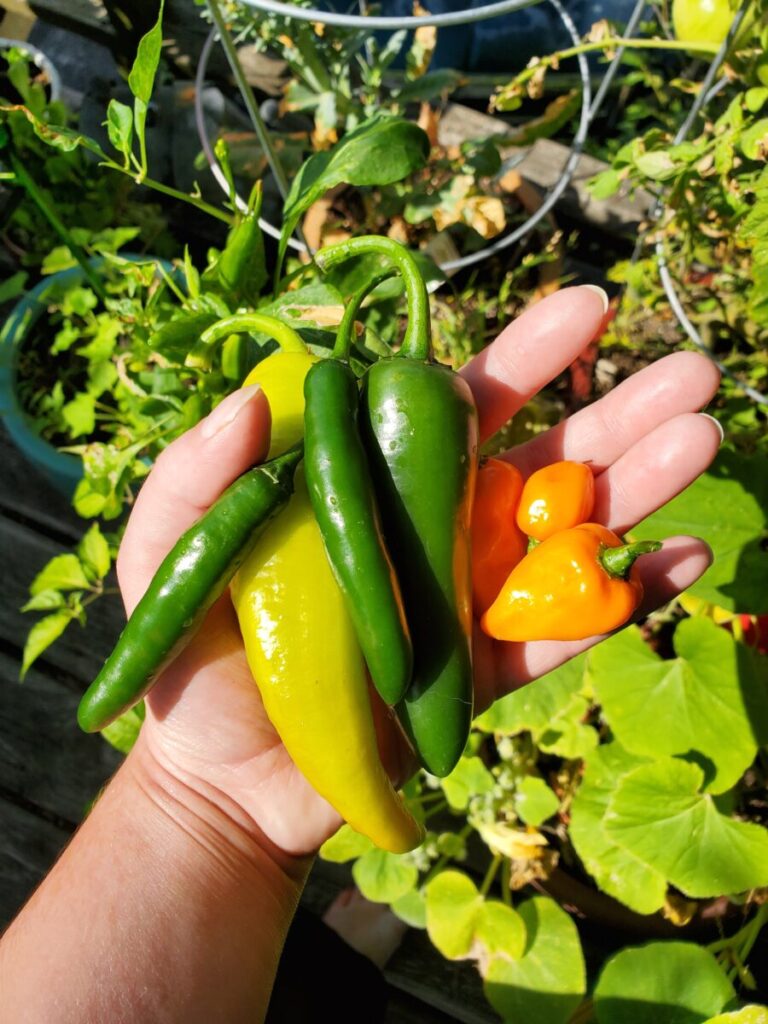
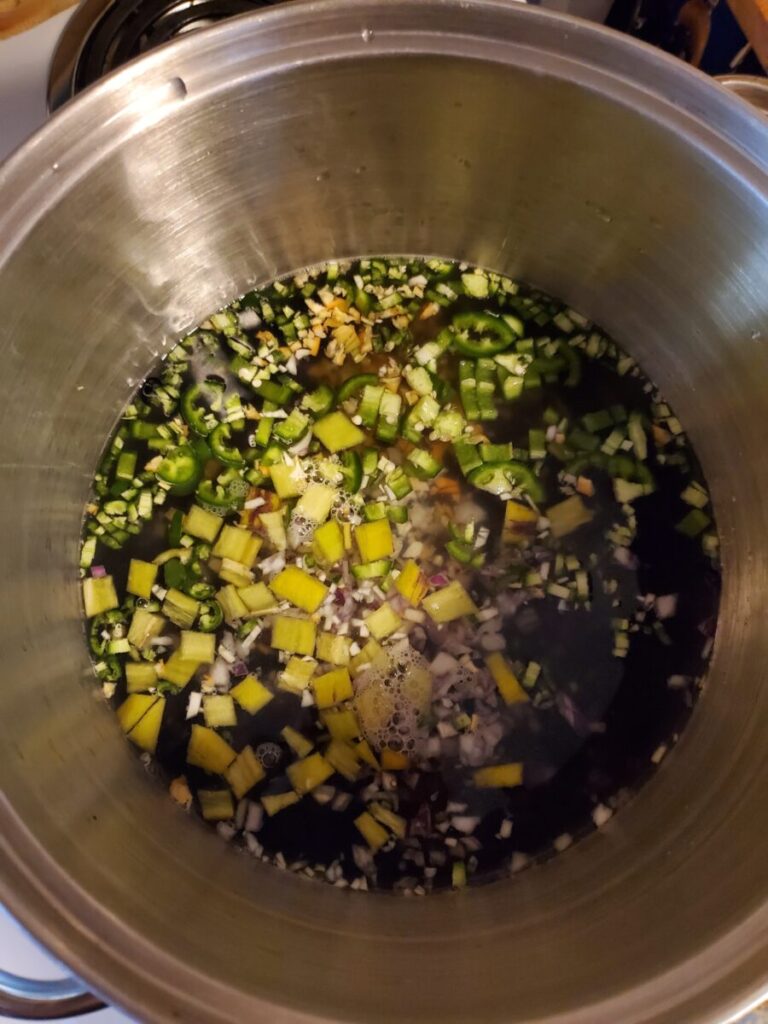
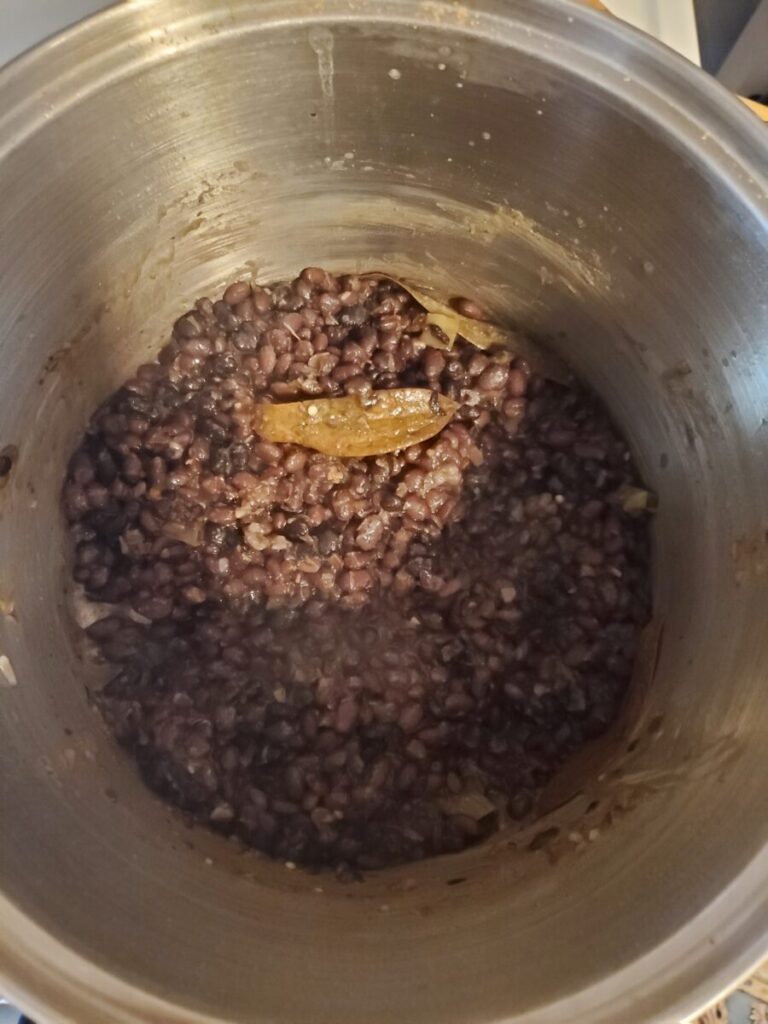
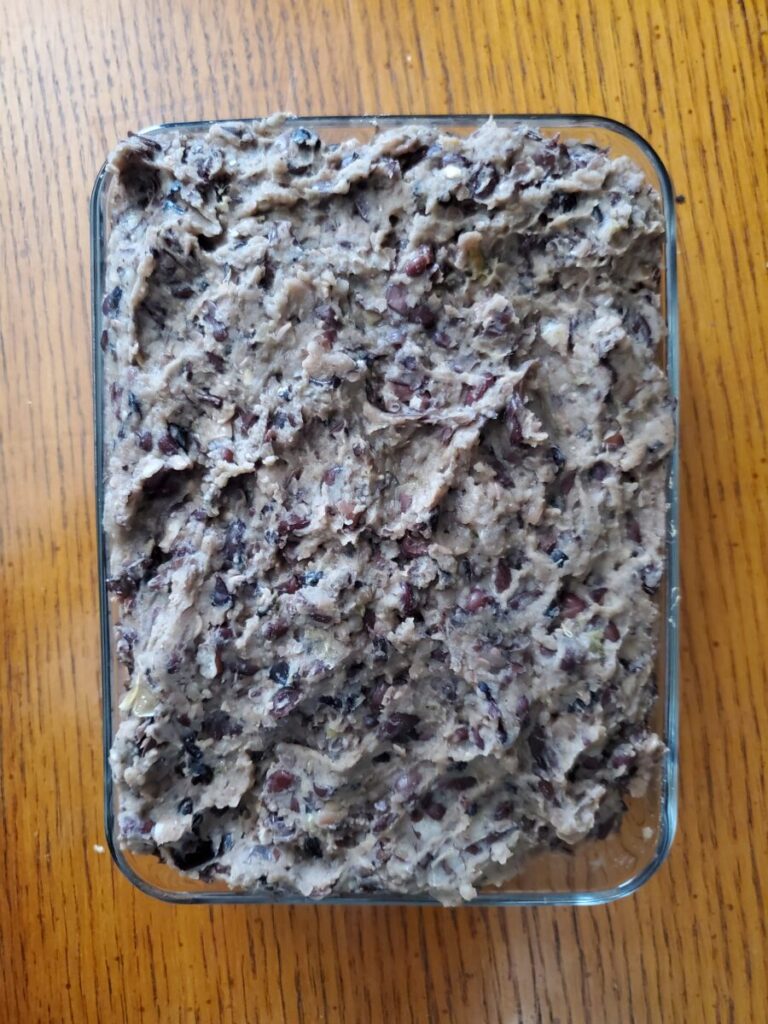
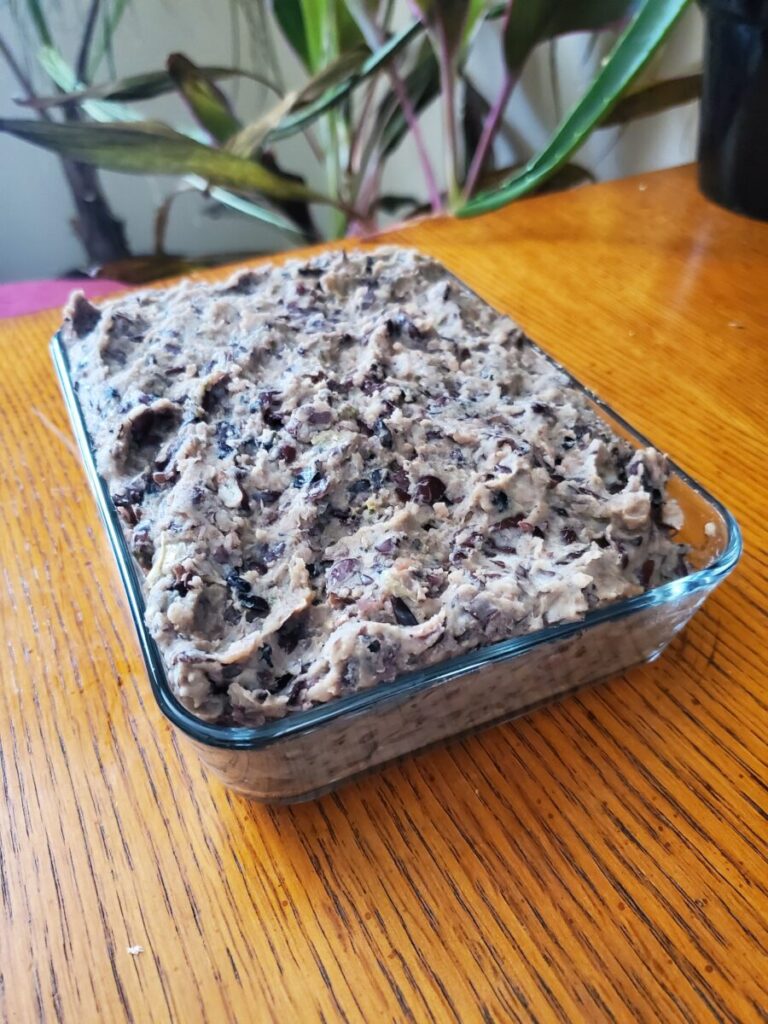
What to Make w/ No-Fry Refried Beans
There are a million things to do with black beans. But, in my ever-present desire to turn absolutely everything into a burrito! It seems only fitting that I do the same with a recipe that actually tends to go in tortillas.
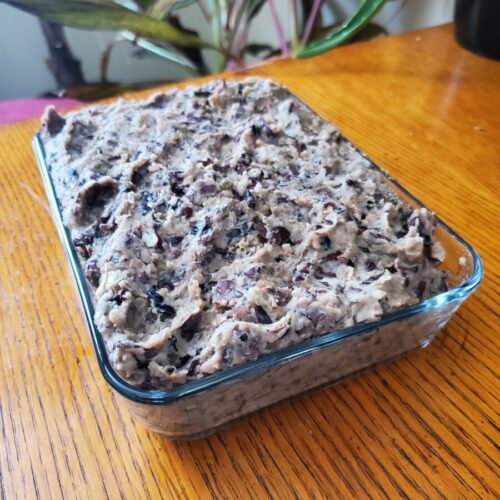
No-Fry Refried Beans w/ Garden Peppers
Equipment
- Large Bowl
- Large Pot
- Potato Masher or Food Processor (optional)
Ingredients
- 1 lbs. dried black beans ~2 cups, soaked overnight
- 2 serranos minced
- 3 habaneros minced
- 1 jalapeño minced
- 1 banana pepper minced
- 4 cloves garlic minced
- 1/2 shallot minced
- 4 bay leaves
- 1 tbsp. olive oil
- 1 tsp. salt
- 1 tsp. pepper
- 1 tsp. cumin
- 1 tsp. cayenne pepper
- 2 limes juiced
- 5 c. water
Instructions
Soak Beans
- Add beans to a large bowl and cover with cold water. Soak overnight, or at least 12 hours.This is a controversial stance, as some people don't soak their beans at all. It's more of a personal preference. However, if you have older beans or want the cooking process to go a little bit faster, it's usually better to soak your beans.
Cook Beans
- Drain the beans.It can also be helpful to remove any stones or debris, really anything that isn't a bean at this point. I don't tend to find a lot of this in store bought dried beans. But it is something to potentially look out for.
- Add the beans and all of the other ingredients to a large pot with 5 cups of water.
- Bring to a boil and then reduce to a simmer. Simmer, uncovered, for 2 hours, or until tender. This is typically right before they begin to split open.The longer you soak the beans, the softer they will be and the less time that it will take to cook. This is also a bit of a personal preference. I like to cook the beans a little bit longer so that they mash a little bit smoother. However, a firmer bean will typically cook in 60-90 minutes. A dryer bean might take 4-6 hours and really old beans may never soften entirely.
- When the beans have reached the desired consistency, if you still have extra water in the pot, either drain and reserve the liquid or simmer out the remainder of the water.If you choose to do the simmer out method, stir constantly as the water level diminishes, or you will burn the beans on the bottom of the pot. Otherwise just strain the beans into another container.
Mash Beans
- Remove the bay leaves and mash with a potato masher. You can also pulse in a food processor or puree entirely, if you want a smoother consistency.This might require more water. If you reserved some of the cooking water, add this back into the beans as needed. Otherwise, just add more tap water until you've reached the desired consistency.
- Adjust seasoning to taste and serve immediately or refrigerate for later use.
Tips, Tricks, & Notes
- If you didn’t soak the beans beforehand, you can still use this method. It will just take longer to cook. I recommend rapid soaking. This entails adding the beans to a pot and covering with 2” of water. Bring to a boil, uncovered, and boil for 1 minute. Remove from heat and cover. Let soak for an hour. Then, begin the cooking process outlined in this recipe.
- While you’re cooking, if the water level gets too low and the beans are no longer covered, add more water. Just make sure not to add too much. Otherwise, you will end up with bean soup, instead of refried beans! Add just enough so that the beans are barely covered, especially near the end of the cooking process. At a certain point, about a half hour before they’re done cooking, it helps to evaporate out much of the water and stir them.
- I also have an entire article on The Fundamentals of Stovetop Black Beans with additional tips and tricks.
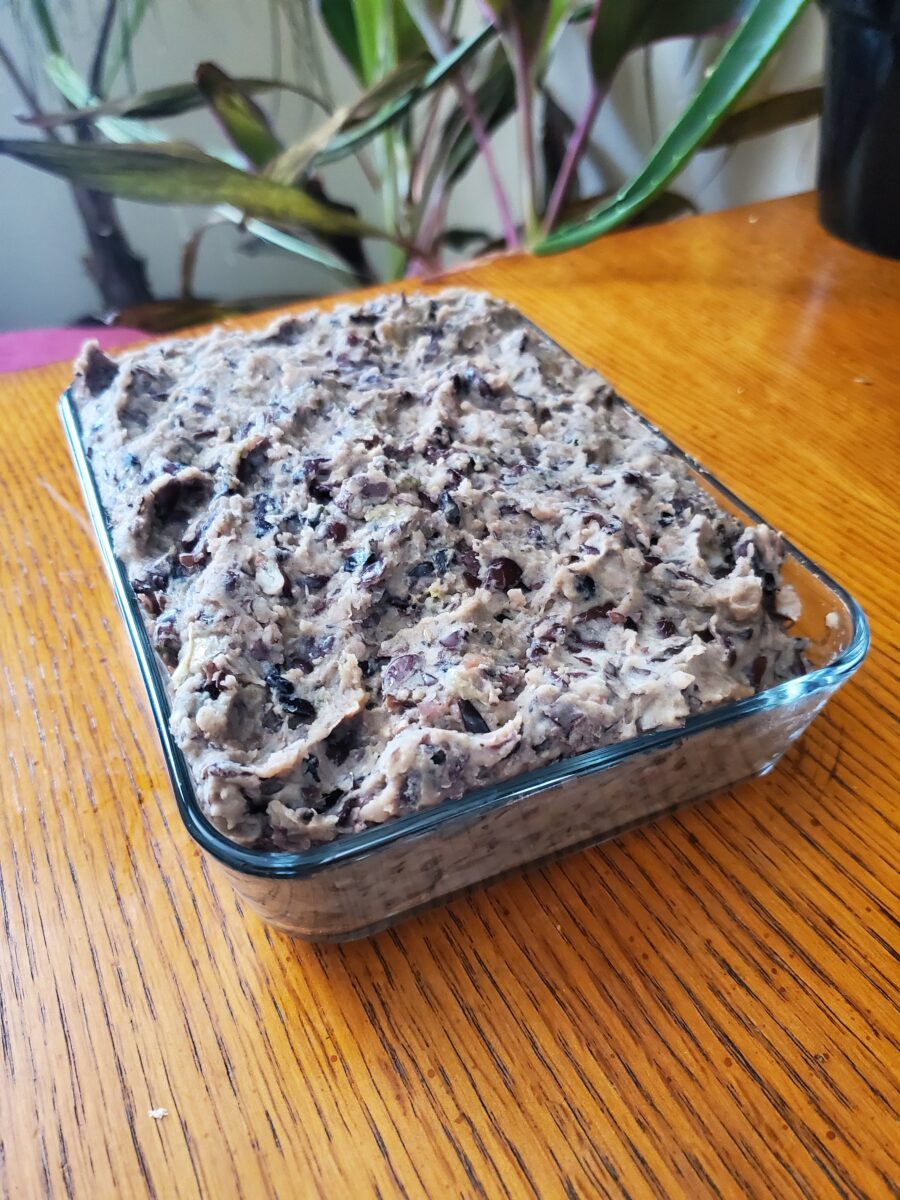
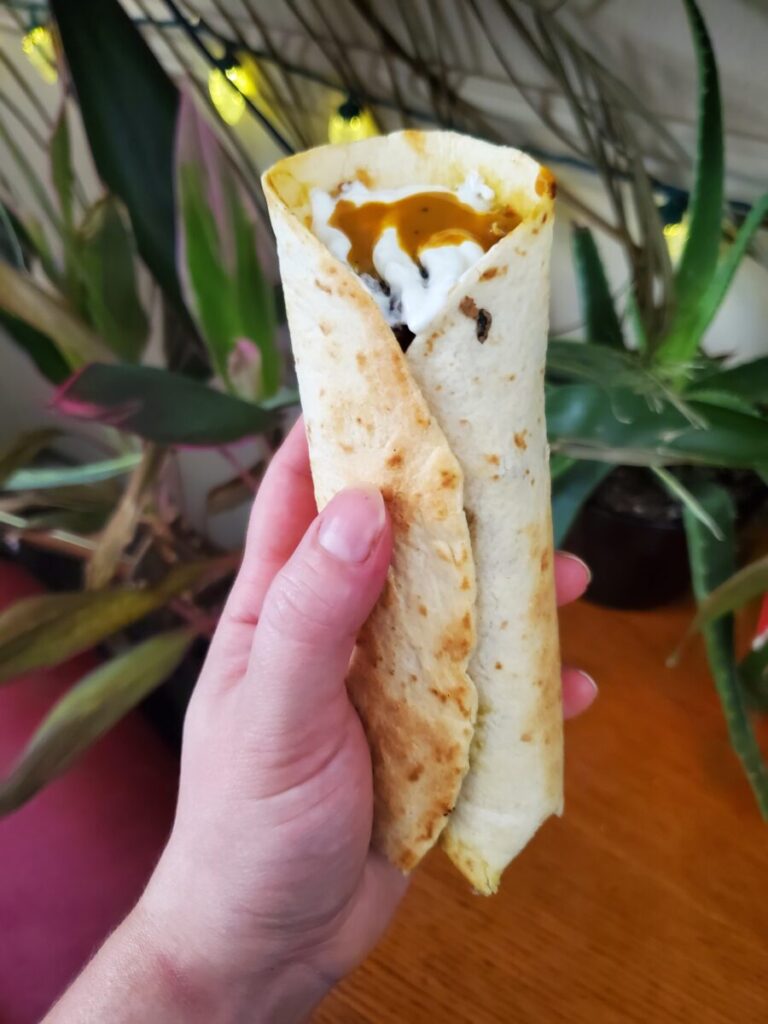
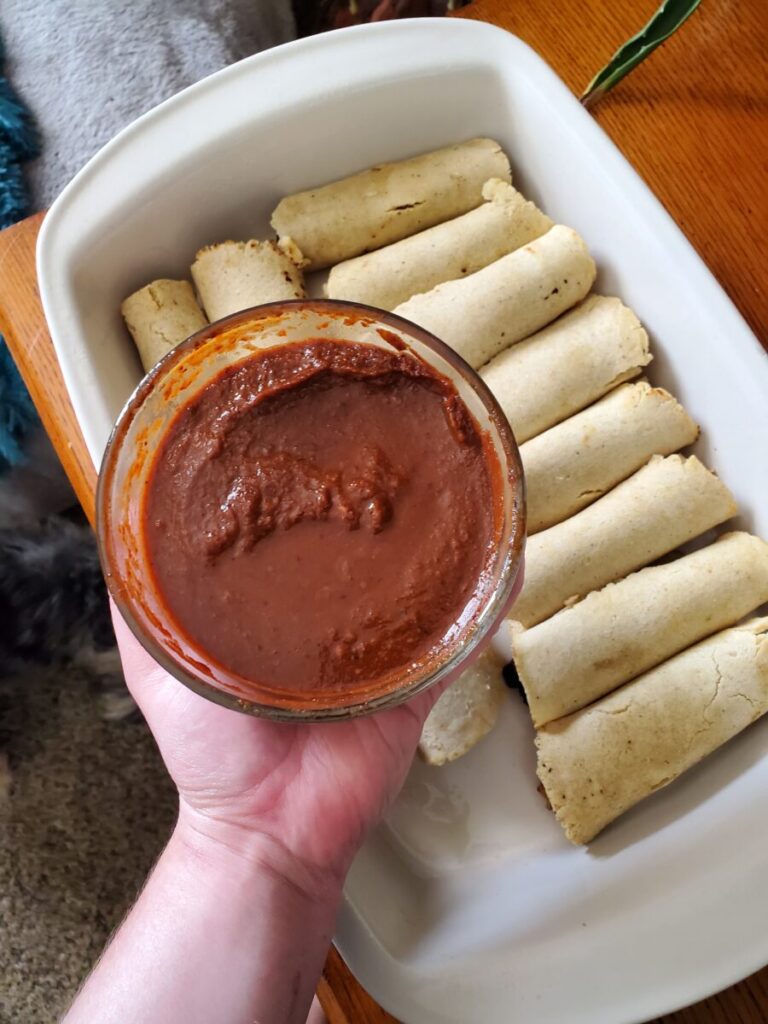
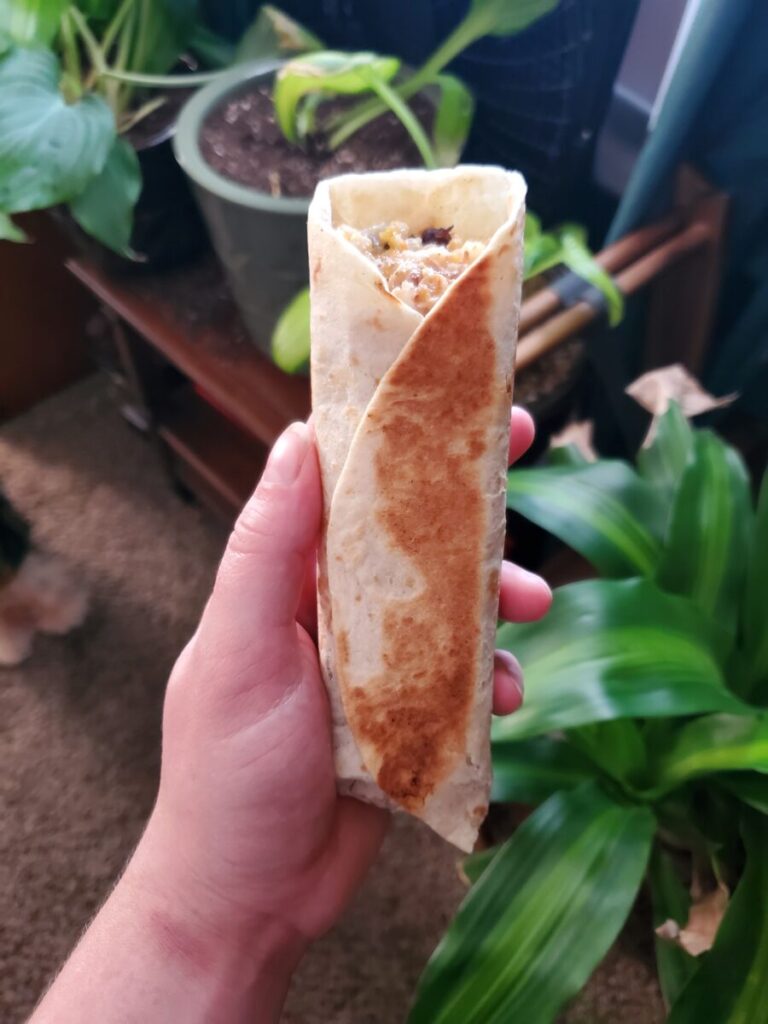
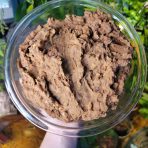





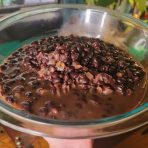

Leave a Reply